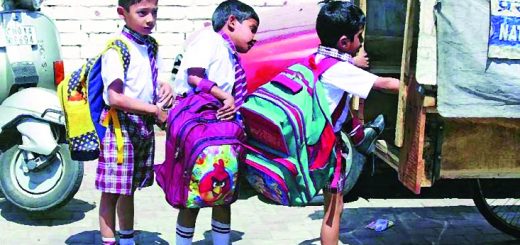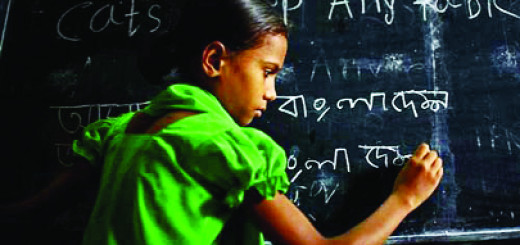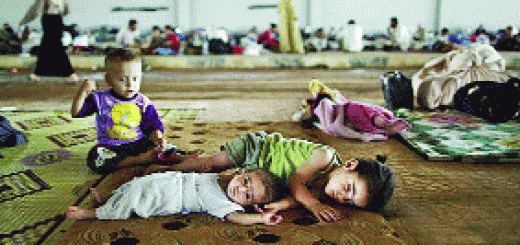Post-quake rebuilding -moinul alam
Rebuilding is going on in Turkey and Syria after these countries were hit by massive earthquakes in the wee hours on 6th February, 2023. It was one of the most devastating natural calamities in recent time that left more than fifty thousand people dead and nearly a million people injured. Rescue operations concluded three weeks after the earthquake. A team from Bangladesh composed of members of the armed forces and the Fire Service & Civil Defence force also participated in the rescue operation.
Here comes the question: Does Bangladesh have enough preparedness for a natural disaster? Do Bangladesh Army and Fire Service & Civil Defence of Bangladesh have enough preparedness for any big earthquake? How many developers are there in Bangladesh? Are these companies only constructing multi-storied buildings which will just spell dangers for the service-takers during an earthquake?
In 1990 there were 11 real estate companies in Bangladesh but in a span of 32 years the number has reached 1191 who are registered with Real Estate and Housing Association Bangladesh. These developers are responsible for giving rise to myriads of buildings in Bangladesh. For construction as well as destruction an excavator is needed because it could be used to dig anywhere as the machine can dig from 350 to 1,000 cubic yards per day, depending on a number of factors including bucket capacity, type of ground, operator skill and efficiency level. Usually a backhoe loader or an excavator can remove 40 cubic yards per day. The comprehensive approach to disaster management comprises four things prevention, preparedness, response and recovery.
The biggest challenge ahead is reconstruction of the affected areas. This time the rebuilding or reconstruction is appearing to be the most challenging one as the Turkish government promised to rebuild the quake hit areas within a year. It seems to be a daunting task as nearly more than 1 million of structures have to be restored at the cost of billions of dollars. Nearly half of the 3.4 millions of structures including motorways and underground pipes may need to be demolished.
The earthquake of 6th February in fact revealed the fragility of Turkish infrastructure as it ravaged both the modern and ancient buildings.
As far as reconstruction after an earthquake is concerned, Turkey is well experienced in this regard. On 17th August 1999, a 7.4 magnitude earthquake hit the city of Golcuk, leaving nearly 17 thousand people dead. The earthquake rendered more than 1 million people homeless. However, systematic reconstruction turned the city under rubble into Paris of Kocali- the industrial heartland of Turkey.
The Turkish government undertook a post-quake recovery plan. Massive soil testing was done and the affected area was divided into residential and industrial blocks accordingly. In order to build new structures, strict rules were made and adhered to. Maximum height of 3.5 floors was stipulated and the use of stronger cement along with thicker steel was made compulsory. In addition, stronger building requirements including mandatory building inspection was adopted.
The rebuilding this time must be done with careful enforcement of seismic safety standards and safer structures have to be built up. Moreover, it is also important not only to replace the demolished buildings but also critically analyze scientific data so that no structure is built on the fault line.
Social movement may play an important role in speeding up the rebuilding process and it may also ensure transparency and accountability therein. On 6th April 2009, an earthquake struck the Italian city of L’Aqulla. Subsequently, the city was declared a red zone and the residents were barred from entering. A protest was staged nearly a year later which was known as “1000 keys protest”. It was a symbolic protest and staged by those living inside the city but unable to have access to their own homes. After a week of this initial protest, nearly 6000 people decided to meet. They took with them wheelbarrows, shovels and buckets to urge the authority to start the reconstruction process. A group was opened in Facebook on the same day with the aim to promote transparency in the management of the fund, to reopen the red zone and to sensitize public opinion on issues of debris removal.
Considering the global diffusion of modern communication networks and proliferation of human practices using these networks and platforms, it may be inferred that people from all walks of life may be involved with the rescue and rebuilding process through the online dimension. Webs may play an important role in ensuring coordination between the offline and online actors during the crisis moments.
In Bangladesh as well, people are getting more familiar with webs and the internet. Facebook is also playing an important role in maintaining social networking and communications. There have been incidents of spreading rumors as well as converging people for humanitarian purposes in recent times. During many natural disasters and accidents people here go on live broadcast using online platforms. Such initiatives enhance participation of people both online and offline. However, the government has to consider maintaining an internet connection that will remain uninterrupted even after an earthquake. Steps must be taken in this regard from now on so that during the time of an emergency, people may communicate from beneath the rubble seeking help.
Bangladesh is also under the threat of a devastating earthquake. Unplanned urbanization of the capital Dhaka has made the overall scenario alarming. Recent incidents of building collapses due to explosion have revealed the poor co-ordination amongst our rescuing authorities. Rescuing authorities including the armed forces and the Fire Service and Civil Defence forces lack manpower and equipment to launch a rapid rescue operation that may save millions of lives. Even if had the rescuing forces have adequate manpower and equipment, questions remain whether they would have been able to reach each and every collapsed site following the quake. It seems almost impossible as high-rises have been built up like mushrooms, defying the building code.
Existing corruption and irregularities in the regulatory bodies like RAJUK have made it easier to construct structures illegally. There have been many incidents of fire and building collapse across the country in recent times. However, the government and the authorities concerned have not taken the issue seriously.
It is immediately necessary to adopt a policy and procedure concerning earthquake preparedness. At the same time strict inspection of the buildings have to be carried out. Those buildings unlikely to sustain a major tremor have to be demolished or repaired. Besides, it is also necessary to impart rescue training to individuals and volunteers so that at the time of crisis anybody may come to the rescue of those trapped under the rubble.
It is also important to increase coordination amongst authorities like WASA, Titas gas, DESCO and DPDC. The underground obsolete gas pipelines need to be thoroughly scanned and replaced. An auto shut off technology has to be adopted by which gas and electricity supply will be automatically turned off when there is any tremor. In consequence, fire incidents following a quake will be significantly reduced.
We need to make sure that our hospital buildings and those accommodating the rescuing forces are strong enough to sustain a quake. Otherwise, post-quake rescue operations and medical rehabilitation will be totally hampered.
Whenever, there is a quake anywhere in the world, local media becomes active in broadcasting the risks being faced by Bangladesh as far as an earthquake is concerned. But after a few days the issue dies down, so is rebuilding the quake-ravaged issues. This must not be the case and that post-quake rebuilding should not be put on the back burner. The government should focus on our earthquake preparedness with number one priority. It will not only be safe lives following a disaster but also be helpful for upskilling our rescuer agencies. n












Recent Comments